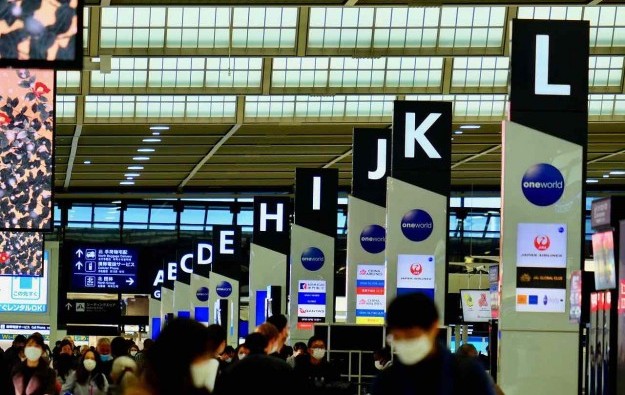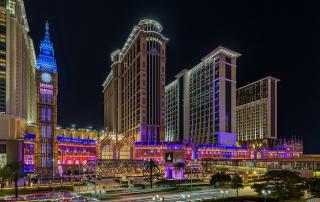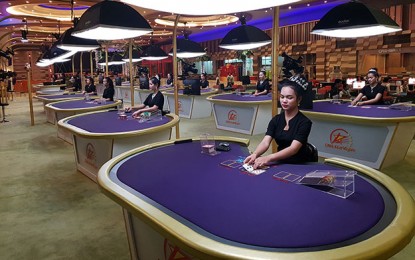Japan govt policy paper restates IR role in tourism revival
Jun 08, 2022 Newsdesk Japan, Latest News, Top of the deck

Japan’s national government has reiterated in its economic policy document for 2022, issued on Tuesday, the role of integrated resorts (IRs), as tourism complexes with casinos are known in that country.
A section of the 36-page economic policy summary is marked “Revival of tourism-oriented nation,” in relation to planned efforts to restart Japan’s inbound tourism market, which has been largely paused as a Covid-19 countermeasure.
The paper – called “Basic policy on economic and fiscal management and reform 2022″ – says the national authorities will “strongly promote” IR development and “casino regulation”.
According to previous commentary from investment analysts and would-be operators, the first casino resorts likely to be permitted under Japan’s liberalisation programme are not expected to start operating until the end of the current decade – at the earliest.
Tetsuo Saito, appointed in the autumn last year as Japan’s Minister of Land, Infrastructure, Transport and Tourism by the incoming prime minister, Fumio Kishida, had said part of his brief was to ensure Japan kept on track with its aim of attracting annually 60 million inbound visitors by the year 2030. He added that the casino resort policy was a key part of the plan.
The economic policy paper disclosed on Tuesday by the Japanese national government also said there would be “planned and continuous support measures such as funding, for the revitalisation and high added value of tourist destinations and the tourism industry”.
That would involve initially stimulating domestic demand for tourism services, while the authorities “continue to carefully consider the infection situation”.
Referring to the effort to restore capacity for inbound air services – that had shrunk in response to market conditions during the height of the pandemic – the paper said the national government would also work at “strengthening the management base of aviation and airport-related companies that support international transportation”.
On May 26, Prime Minister Kishida had said that from June 10, certain international tourists would again be allowed into Japan.
In terms of the policy details, an updated daily cap on inbound travellers would also apply to such visitors. Nonetheless, those travelling from 98 countries and regions classified as “blue” or lower risk, would require neither on-arrival Covid-19 testing nor quarantine.
Those originating places – accounting for circa 80 percent of inbound travellers in pre-pandemic tourism market trading according to media reports – included neighbouring mainland China, Taiwan, and South Korea.
Initially, such entry would be specifically for tour groups, rather than individual travellers.
It was separately reported that a daily cap on the number of visitor arrivals of all types was being increased to 20,000 with effect from June 1, from a previous 10,000 per day cap set on April 10. Subsequently, local media had reported that the daily cap might be upped to 30,000 in July.
On April 26, Osaka and Nagasaki prefectures respectively announced they had submitted to the national government their IR District Development Plans, in time for an April 28 deadline. They were the only local authorities to make bids to host casino resorts. National government response on the applications might come by the autumn, according to Japanese media reports.
Related articles
-
 Philippine President says POGOs must go...
Philippine President says POGOs must go...Jul 22, 2024
-
 Pagcor wrong in law to license China...
Pagcor wrong in law to license China...Jul 22, 2024
More news
-
 Donaco EBITDA up y-o-y to above US$4mln...
Donaco EBITDA up y-o-y to above US$4mln...Jul 26, 2024
-
 HK listed Palasino upgrades Czech...
HK listed Palasino upgrades Czech...Jul 26, 2024
Latest News
Jul 26, 2024
Border-casino operator Donaco International Ltd has achieved a 164.17-percent year-on-year increase in its latest quarterly group earnings before interest, taxation, depreciation and amortisation...Sign up to our FREE Newsletter
 (Click here for more)
(Click here for more)
Pick of the Day
”We’ve got more traction outside of Macau at the moment. But Macau’s going be a bigger focus for us”
David Punter
Regional representative at Konami Australia
Most Popular
 Sheraton brand to exit Londoner Macao, to be Londoner Grand July 25, 2024
Sheraton brand to exit Londoner Macao, to be Londoner Grand July 25, 2024  Macau regulator probes unlicensed gaming agents July 24, 2024
Macau regulator probes unlicensed gaming agents July 24, 2024  Philippines gives 20k aliens in POGOs 60 days to leave July 25, 2024
Philippines gives 20k aliens in POGOs 60 days to leave July 25, 2024  Philippines-listed DigiPlus says not affected by POGO ban July 24, 2024
Philippines-listed DigiPlus says not affected by POGO ban July 24, 2024  Sands China 2Q EBITDA down q-o-q amid low hold, renovation July 25, 2024
Sands China 2Q EBITDA down q-o-q amid low hold, renovation July 25, 2024






